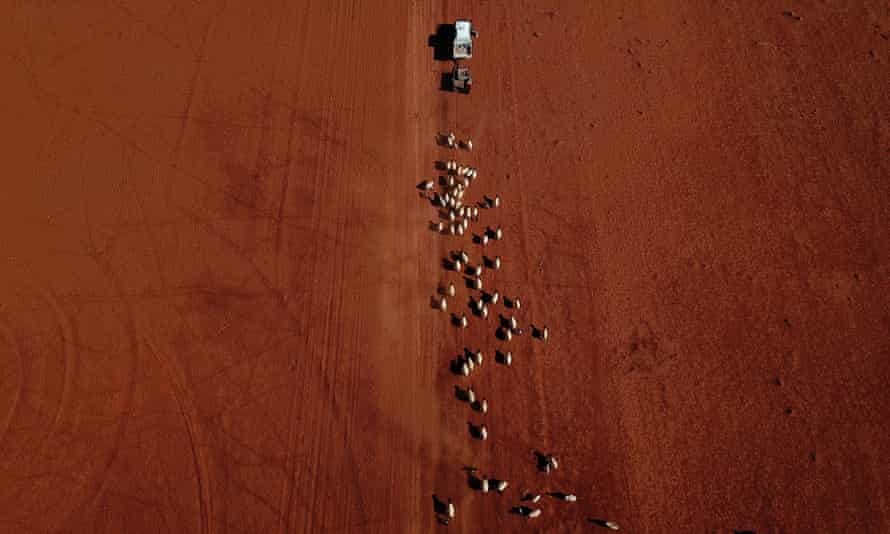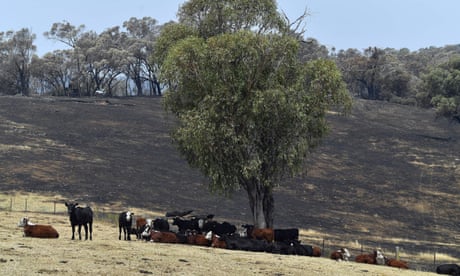Extract from The Guardian
As global temperatures rise, heatwaves, droughts, floods and other impacts will become more widespread, the sixth annual report says.
- Major climate changes inevitable and irreversible - IPCC’s starkest warning yet
- IPCC’s verdict on climate crimes of humanity: guilty as hell
- Climate crisis ‘unequivocally’ caused by humans, says IPCC
- Download the free Guardian app; get our morning email briefing

Last modified on Tue 10 Aug 2021 07.39 AEST
The first major assessment of its kind in seven years from the UN’s Intergovernmental Panel on Climate Change has found the globe’s ocean, lands and air temperatures are rising, and the human influence is “unequivocal”.
But what does the IPCC’s Sixth Assessment Report say about changes in Australia, and what can we expect for the future?
Fire and heat
Australia’s land area has warmed by about 1.4C and New Zealand’s by 1.1C in the 110 years since 1910.
The year-to-year changes in temperatures are now above anything that could have been caused by natural variation. There is “high confidence” that temperatures have been pushed above their range of natural variability across all areas.
The report says land and ocean across the world was 1.09C hotter between 2011 and 2020 than it was in preindustrial times, taken as the period between 1850 and 1900. All the warming was caused by human activities.
There are now more incidents of extreme heat and less cold extremes, and the report says those trends for Australia will continue.
Australia’s fire season has lengthened since 1950 and the number of days with extreme fire danger has increased.
“The intensity, frequency and duration of fire weather events are projected to increase throughout Australia (high confidence) and New Zealand (medium confidence),” says the report.

As global temperatures rise from 1.5C to 2C and beyond, heatwaves, droughts, floods and other impacts become more widespread. Sandstorms and duststorms will probably increase across the continent.
Sea level rise
With Australia’s population heavily concentrated along the coast and in coastal cities, rising sea levels pose a major risk.
Sea levels are forced upwards through thermal expansion because warmer ocean water holds more space, and also because ice attached to land – mainly at glaciers and ice sheets – is melting.
Ice sheet loss has increased by a factor of four between 1992-1999 and 2010-2019 and ice melting from glaciers and ice sheets has overtaken thermal expansion as the main contributor.
The most recent period from 2006 to 2018 saw global oceans rising at a rate of 3.7mm a year. In Australasia, sea levels rose faster than the global average in recent decades.
There will be an increase in coastal flooding and the shore will retreat in the 21st century and beyond.
Beaches have already started to retreat and if emissions remain very high, then sandy shorelines could retreat by 50 metres or more by the end of the century. Many sandy coastlines in Queensland, Northern Territory and the north of Western Australia could retreat by more than 200 metres in the absence of building barriers, the report says.
Even under the most ambitious cuts to emissions, the world’s oceans will probably rise between 28cm and 55cm from levels in the 20-year period of 1995 and 2014. But if emissions remain very high, seas will rise between 63cm 1.01m.
But the report also says increases of 2 metres “cannot be ruled out” because of the challenges in modelling how the massive ice sheets in Greenland and Antarctica will react to rising heat.
Floods and droughts
But in the south and east of the continent, rainfall has generally decreased and the instances of droughts affecting ecosystems and agriculture have risen.
In northern Australia, there has already been a rise in annual rainfall and heavy rain events, with a fall in droughts and the total number of cyclones.
Across the east of the continent, the average rainfall in cool seasons will fall, but there is medium confidence that there will be more extreme downpours. Droughts are projected to increase at 2C of warming.
The most pronounced changes in rainfall have been seen in the south-west of Australia, where higher greenhouse gases have seen significant loss of rainfall which is very likely to continue, even if emissions are cut drastically.

At times, changes in ocean temperatures can have large influences on rainfall in parts of Australia. These changing phases – known as El Niño and La Niña – will deliver even greater swings in rainfall in the second half of the century around the world, the report says.
There is also high confidence that snow cover and depth in Australasia has already fallen, and this is projected to continue.
Oceans warming
Extra heat taken up by oceans is having profound affects around the globe. The changes in heat are “irreversible” on scales of a century or greater.
The report says the top 700m of the ocean has warmed since the 1970s, with the science showing its “extremely likely” that human activity has been the main driver.
In Australia, an increase in marine heatwaves has been observed and, like acidification in the continent’s marine environment, will worsen.
For the first time, the IPCC has released an interactive chapter to its blockbuster report where regional changes and projections for the future under different levels of greenhouse gas emissions can be explored.
No comments:
Post a Comment